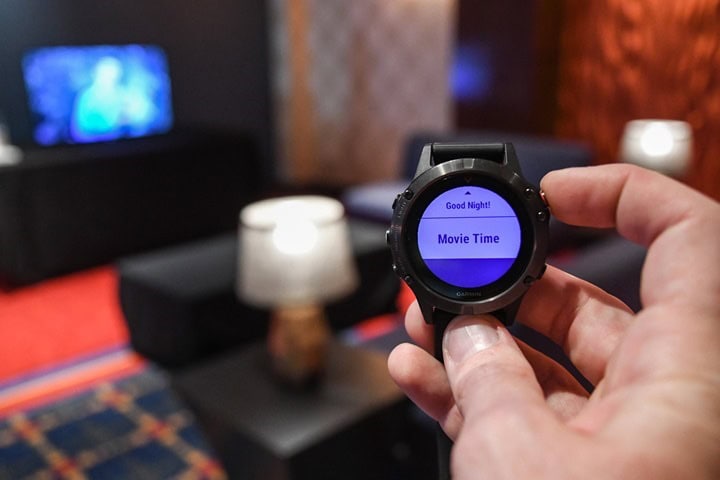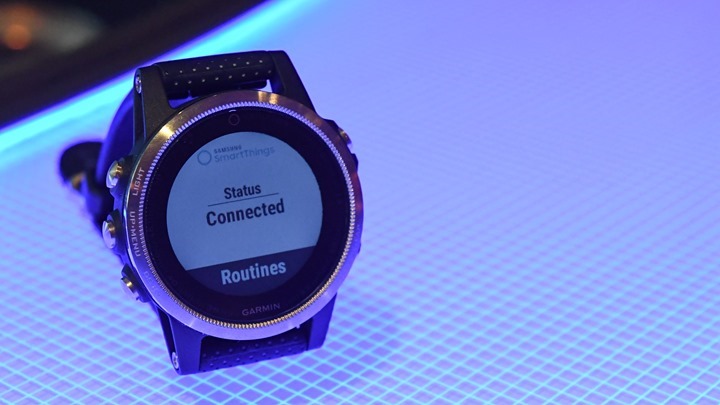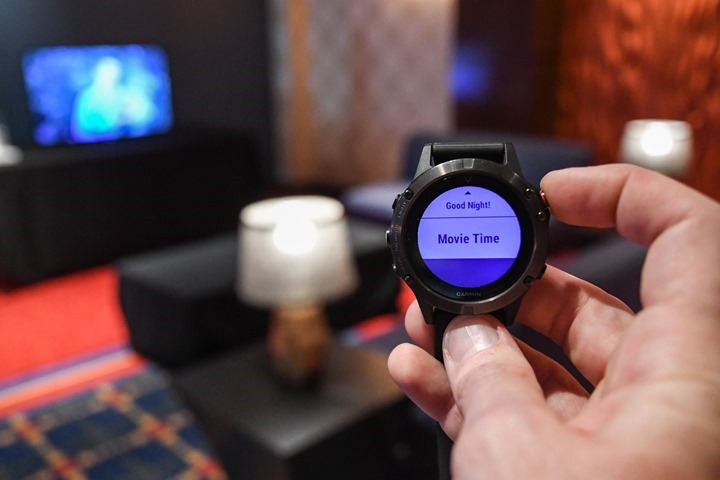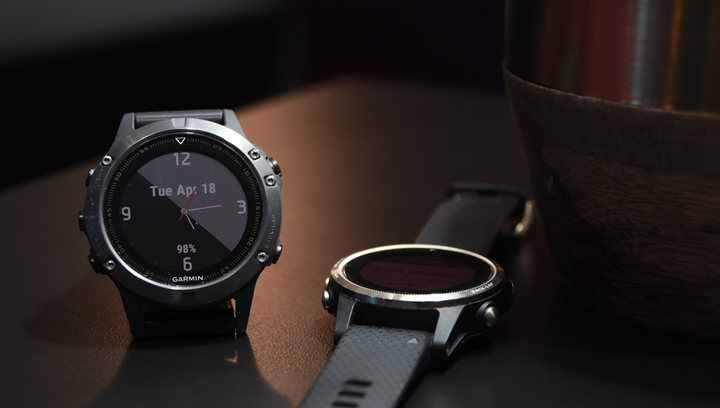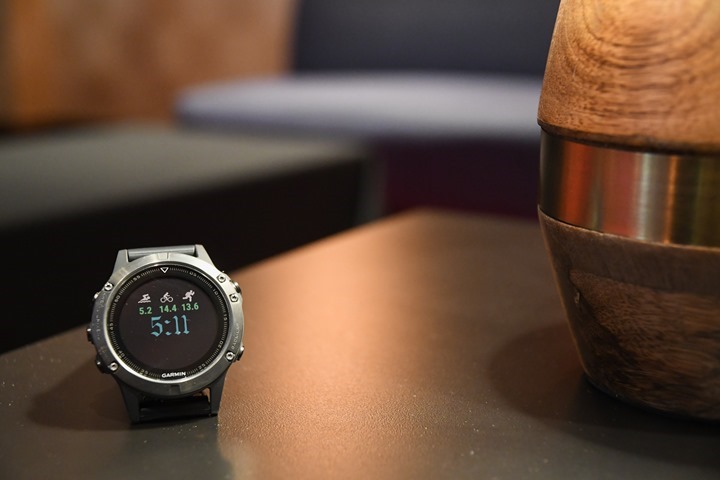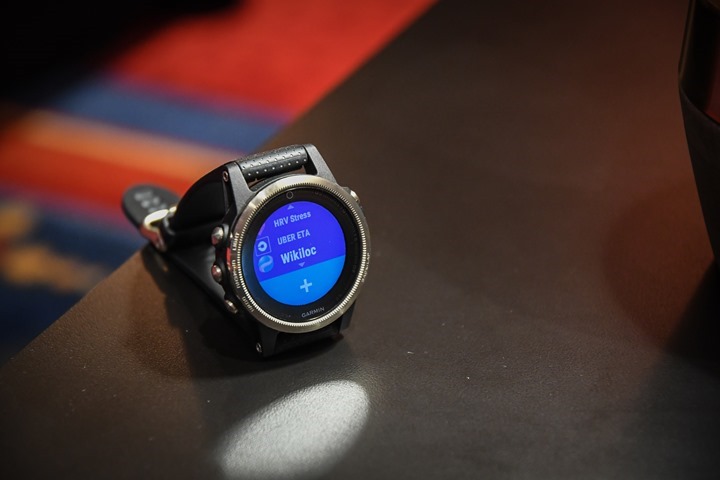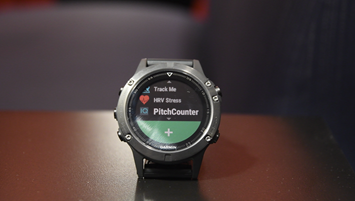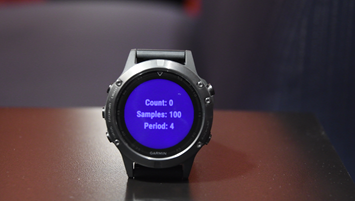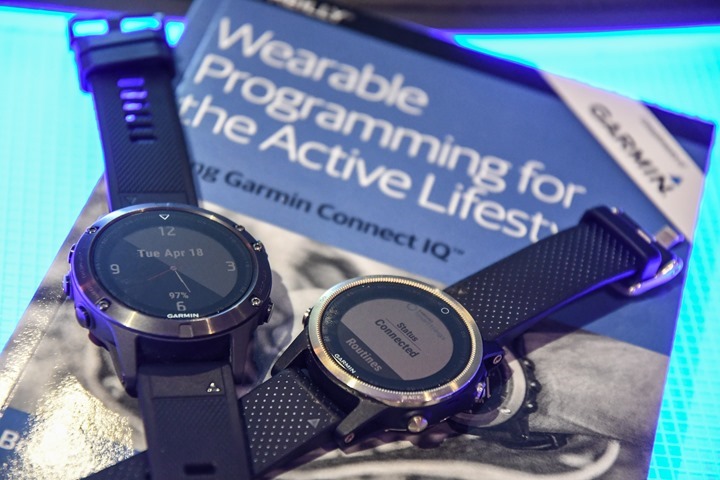As many of you know, today kicks off Garmin’s first Connect IQ Summit, held in Olathe, Kansas. The summit is aimed at developers wanting to build apps on Garmin’s wearable and related devices. A sphere that, as of this morning, now encompasses just shy of 5 million Connect IQ capable devices and over 1,000 developers with 3,000 apps in total. All of which have been downloaded 29 million times to date. Given these numbers, it was logical to eventually progress into having a dedicated conference, just as many other software technologies do.
And of course the conference is just as much about the attendees as is the technology that’s being announced. For example all the big names if the fitness platforms realm are here – from Strava to Under Armour, and Training Peaks to Xert. But perhaps more importantly are the non-fitness names. Those being companies like Uber, Nest (of Google), Southwest Airlines, SmartThings (of Samsung), and countless more. Which isn’t to say that smaller developers aren’t here, there are plenty of those that make just as many cool apps (in fact, far more in terms of sheer numbers). Apps like like WikiLoc and DWMap are all present.
The point is, in it’s first year it’s a bit of a who’s who. Nonetheless, this post is about the specific technologies being announced today. Or rather, development pieces. Like my past Connect IQ posts, these server as a starting point of sorts where companies can now leverage these new capabilities to do interesting things. The demos you see here are usually basic and sometimes boring – but they tend to show the potential of a technology. With that, let’s begin.
But first – if you want this entire post in a condensed and pretty video format, ask and you shall receive!
For those preferring text…onwards!
SmartThings Control:
First up we’ve got a cool look at home automation control via SmartThings and their new Connect IQ app. This enables any Connect IQ capable device to control routines from within SmartThings from your watch. So for example you can turn on the lights when you walk in the house, or setup your home theater to a movie mode. Whatever you an dream up within the home automation realm of SmartThings, this can trigger it.
The app works behind the scenes by having your Garmin watch utilize the Bluetooth Smart connection to the Garmin Connect Mobile app. From there the SmartThings app leverages your internet connectivity (cellular or WiFi) to access your stored SmartThings “routines”. From there you can trigger these routines and thus the lights and devices connected to them.
Routines are basically like preconfigured instructions for a pile of devices. For example to turn off all devices in the house, or just the ones on the first floor. Note that it’s not going to list every device in your house on your watch. Quite frankly that’d be a user interface mess. Instead, by focusing routines it makes it easier to group those into logical buckets that you can turn on and off.
In the below photo you can see the routines that have been configured within SmartThings. I can select any of these routines, such as ‘Good Morning’, which turns on the lights and the TV. Or Movie Time, which turns on the TV and dims the lights. Netflix and Chill time was not an option I could demo, due to the mostly PG-rated content of this blog.
Within about 1-3 seconds of pressing that button on my watch the lights turn on. It’s pretty nice. Of course this isn’t terribly unlike other wearable devices that have done semi-similar things. But like much of this post, it’s about those features coming to Connect IQ. Inversely there are certainly plenty of things that competitors like Apple and Android Wear have introduced in the last year that Garmin has had for years. The path forward in progress isn’t always equal.
I demo the entire SmartThings piece from start to finish up above in the video at the start of this post. The best part here is that unlike the remainder of this post, the SmartThings app is available now…and not limited to one particular app platform.
Connect IQ 2.3 Platform Enhancements:
For many folks, they might not care much what Connect IQ version you’re on or what that means. But in reality the version of Connect IQ that your watch supports will directly impacts down the road what kind of apps you can get. For example, we saw this with the TrainingPeaks app a few weeks back being limited to certain Connect IQ versions due to those capabilities only being available on those version.
In this case, 2.3 is an incremental update that will be available on the following devices (more or less anything announced in the last 12-14 months):
Garmin Fenix 5/5S/5X
Garmin Forerunner 935
Garmin Forerunner 735XT
Garmin Fenix Chronos
Garmin Vivoactive HR
Garmin Edge 520/820/1000
Past devices like the Garmin Fenix 3 series won’t get these updates, in large part because those devices are maxed out when it comes to either processing power or in some cases simply firmware space. In other cases it’s simply because Garmin isn’t updating those older platforms.
There are four specific major changes/enhancements coming to Connect IQ 2.3, which are as follows.
Always Active Watch Faces:
One of the biggest complaints of 3rd party watch faces via Connect IQ in the past was the inability to show the seconds on the watch face, or for that matter any updates more frequent than every minute. With Always Active Watch faces that changes though. Now watch faces can display not just the second hand but any data they darn well choose at much higher refresh rates. Garmin has even tested down to 25ms (1/40th of a second) – without any degradation of battery life.
And that was really the previous concern – was that by allowing watch faces to update more frequently it could impact battery life significantly. But in talking with Garmin developers yesterday the testing they’ve done shows no impact to battery life at all with the new platform. Of course, like anything it remains to be seen what ‘creative’ things people manage to come up with – but certainly this is good news for folks who like watch face customization.
Background Services:
Next we’ve got what is clearly the first iteration of multitasking apps on Garmin’s platforms. Connect IQ 2.3 supports the ability for apps to run in the background and then enumerate updates to the user based on all assortment of triggers. For example an app can pop-up to remind you of a particular thing to do, like taking nutrition or even medication. That app can then be acted upon, just like you would interact with any other app.
Triggers can be functions like sensor data, updates from a web platform, or other ANT communications. One particularly simplistic app you see above automatically reloads your weekly Strava totals every 15 minutes. While this might be a bit obsessive, it shows the potential of not just a background service/app, but the idea of being able to interrupt or augment what your down on the watch to provide you timely updates that would otherwise have to wait.
You might be asking – how is this different than smart notifications then? Well, it’s much like on your smartphone – sure, you’ve got notifications, but when you’re in the middle of playing Candy Crush it allows your friend to call you – all without existing Candy Crush. Of course your wearable lacks Candy Crush, but the basics apply here.
Certainly there will be applications people find in the sports/fitness realm, but as I alluded to at the beginning of the post – much of these changes are about appealing to apps outside that realm.
Trial Apps:
One of the biggest criticisms of the Connect IQ platform has also been it’s biggest asset: Everything is free. There is no monetization directly within Connect IQ in that you can’t ‘buy’ a Connect IQ app with hard cold cash. It just doesn’t exist.
Some apps like Xert and others have been able to somewhat work around those limitations by requiring login to a 3rd party platform for the app to work, but there were always limitations in that, and it wasn’t necessarily something that was clear to the end user upon downloading the app.
With trial apps though, Garmin will now allow 3rd parties to authorize users to use an app on their devices. And thus by extension the ability for a developer to charge for said apps. Now, the devil is still in the details here because all this really does is offload the payment processing piece more clearly onto said 3rd party developer. A piece that Garmin (like most companies) wants approximately nothing to do with. Managing currencies and points and such in an app store model reaches the height of sucky things that app ecosystem have to deal with.
Still, by at least making the process easier here for 3rd party developers it should simplify their ability to manage consumer expectations a bit, as well as offer themselves a more economical model.
Action Intelligence:
Next we’ve got probably the feature with the most potential, which is Action Intelligence. This allows apps to access and record accelerometer data at up to 25hz (aka 25 times a second…aka every 40ms). The idea behind this is to enable apps to start to do more gesture sensing and control. As well as recording of those movements.
For example Garmin had a simple pitch counter app, that would allow someone wearing the watch to enable the app to count how many baseballs they threw as a pitcher. That’s a simplistic example, but it worked reasonably well when demoed to me.
The feature allows companies to gather 3-axis accelerometer data, but also to leverage Finite Impulse Response (FIR) and Infinite Impulse Response (IIR) filters which and then filter out noisy day (or include such data). The idea being that a developer could target just the exact accelerometer data they wanted for their specific application. All of which can be recorded and potentially processed elsewhere on a 3rd party platform.
In some ways this is similar to what Suunto is doing with their Movesense pods, except that this is built into the watch itself. So rather than a secondary pod, the user just wears the watch as normal. On the flipside, the pod approach of Suunto is better in scenarios where you want to measure things not on the wrist (i.e. on skis or legs/etc…).
Wrap-up:
Phew, lots of stuff being announced today! Sure, some of this is kinda dry and boring for non-developers. For most of us, we’ll have to wait for interesting apps to start taking advantage of this. In some cases they’ll be a matter of days, whereas for other apps it’ll be months. For example the changes we saw back in the fall realistically took a few months before major headliner apps started to take advantage of them.
Still, it’s interesting to see wearable app platforms continue to evolve, whether it be Connect IQ, Android Wear, Apple’s WatchOS, or other up and coming or re-invented platforms. There’s no better time to be a consumer in this space, as the competition is heating up!
—
Oh…don’t forget! I’m speaking today at 1:00PM US Central Time (2:00PM US Eastern, 8:00PM Central European Time). That session in front of hundreds of folks here in a rather fancy auditorium with swanky lighting will be broadcast live on Facebook Live on Garmin’s page and then I’ll have someone retweet it to my Twitter. I’ll be covering all sorts of my thoughts on the app and wearables market. Should be fun and offer some of my insights into where I think things have gone well, not so well, and what I’m looking for coming down the pipeline.


























